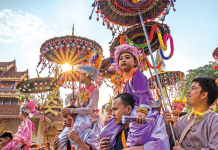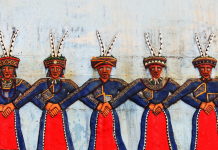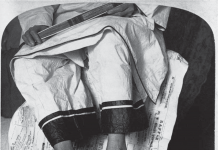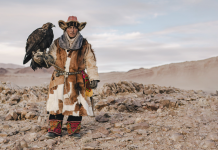Ruesi have wandered the Thai wilderness for hundreds of years. All but forgotten, these “wizards of the forest” are today seeing a gradual comeback, as they work their magic for the devotee in need
Text and Photos Francis Wilmer
Hidden among the paddy fields of a remote Thai province lies the home of a wizard. In a bungalow on the outskirts of a small farming village in Uttaradit in Northern Thailand lives Ketmunee, one of the country’s few remaining ruesi. The translation of ruesi falls somewhere between “forest sage”, “monk” and “wizard”. A spiritual descendant of the rishi of India – who are known for writing the Vedas, the first scriptures that formed the foundation of Hinduism, and living lives dedicated to searching for enlightenment – Thai ruesi have practices tied to Hinduism and animism, though they are considered lay members of the Buddhist community. Portrayed in ancient statues and paintings, ruesi were once sought out to heal the sick, protect people against evil, and foretell the future. But after Theravada Buddhism swept the country at the turn of the last millennium, their influence waned, and they gradually faded from mainstream spiritualism.

Today, rumours of black magic, curses and even murder haunt ruesi practices. Most Thais have never seen one in the flesh, only on television, where they are typically portrayed in period dramas as menacing forest sorcerers with sinister powers. But Ketmunee chuckles when asked about these characterisations. “I don’t watch television, but I am nothing like how they portray us,” he says. “I just like to be alone – to focus on my meditation, to bless the world around me.” Traditionally, ruesi live an austere life in imitation of the Lord Buddha, so as to gain a deeper understanding of the universe. The priorities of each individual differ: Some act as healers while others do fortune-telling, perform blessings, or sell love potions. Ketmunee chose to spend the past five years meditating in various caves, and only just returned to the modern world, where he splits his time between his house and the nearby forest.

Despite the tattoos, dreadlocks and tiger skins, Ketmunee cuts a serene figure in the wild. Strolling through the forest, he gestures with his staff to various plants, fruits, roots and mushrooms, pointing out which are poisonous and which can be eaten or boiled into tea. “I lived with this for all those years in the caves,” he says, patting his small bag. “You can find whatever you need in Nature, and if I get sick, I can always just heal myself with herbs.”
Further north, among the foothills of the Mae Wang district, lies the home of another ruesi: Chaichatree, who goes by the nickname “Boo” (shorthand for “grandfather”). The elder ruesi has a silver beard and his typical work consists of performing various acts of sorcery. “Some people opened a Thai spa in Japan, but business wasn’t great, so they called me,” he recounts. “I wrote a spell for them and put it in a sacred candle. I burnt the candle and said a prayer for them. Just like that, customers started to come in, and the business survived.”
Chaichatree claims his staff holds power from cankama, a form of walking meditation. The longer he walks with it, the greater the blessings he can perform. “Magic is everywhere!” he declares. “You see that guy in the film Harry Potter? He’s got a magic stick, right? What is that stick? The same as a ruesi’s staff, of course!”

It is precisely these magic powers that have drawn increasing numbers in recent years to begin seeking out the ruesi again. In a quaint suburban housing estate in Chiang Mai’s Maejo municipality, a gaggle of people sip tea and mingle over blaring Thai holy music on the front lawn of a detached two-storey house. This is the home of a third ruesi, Phuttavet Khemmatevo, and he prefers the city life. Sitting in the living room amid Buddhist and Hindu statues, Phuttavet facilitates a wai khru, or master worship ceremony – a practice commonly conducted in schools and temples across the country, but here with a ruesi twist. His devotees have come not only to pay their respects, but also in search of blessings and spiritual fulfilment.

One by one, they enter the room and fall to their knees at his feet. A large golden crown, moulded into the face of a ruesi god, is lifted over their heads as Phuttavet mutters a blessing. While some politely proffer their thanks and move on, others erupt into an uncontrollable frenzy. They howl and thrash about on the floor while assistants attempt to pin them down. “The mask unlocks the spirits inside of them, particularly if they have spirit tattoos (Sak Yant),” Phuttavet explains. “If they have a tattoo of a tiger, they will act like a tiger. This gives them strength and courage.”

After the ceremony, an envelope makes its way around the crowd. As with monks, ruesi accept monetary donations, and Phuttavet has succeeded in capturing a niche but affluent market, for his worshippers ooze wealth and success – which they no doubt attribute to their piety. One such follower is Kai, an American-born Thai in his late 20s who faithfully makes a pilgrimage from California each year. “I’m in the US Army, and before I was deployed to Afghanistan, I put on an amulet blessed by Phuttavet,” he explains. “I had a few close calls out there – bombs exploding, like, right next to me – and I’m certain that amulet saved my life.”

Estimates of how many ruesi exist in Thailand vary from as many as 100 to as few as 15. And after living in the shadows of the jungle for so many years, some of these hermits are beginning to adapt their practices to modern times. Phuttavet, for one, has travelled internationally, speaks good English, owns three properties, and holds a master’s degree in Thai from Chiang Mai University. His Facebook page boasts over 4,500 followers, and a fan page has even sprung up, managed by his disciples. Every few days, he posts Instagram images of tantalising amulets, selfies while on pilgrimage, photos of himself receiving blessings from monks, and pictures of meetings with followers. Via social media and his online shop, he even sells charms, amulets and potions for every situation.

Ketmunee is also modernising his services. In 2013, with the help of a loyal disciple, he started a Facebook page, and now has over 3,000 friends. His posts are typically photos of himself alongside mystical amulets and quotes from Buddhist texts. Phuttavet speculates that a new era of the ruesi is dawning thanks to technology, which is allowing more people to find out about the practice. “I receive messages from people asking me to train them (to become a ruesi),” he says. “Most of them are foreigners, actually, but some Thais, too.”
Related: Thailand’s Hill Tribes See Their Last Days
Related: The Art of Eight Limbs
Related: Pachyderm Parade
For more stories and photographs from this issue, see Asian Geographic Issue 130, 2018
Francis Wilmer is a writer and documentary producer based in Thailand and Myanmar. His work focuses on niche topics around identity, class and spiritualism, trying to bring coverage to overlooked regions and peoples. He is an editor for the Burmese media agency Sakse and has written for publications such as The Diplomat, Southeast Asia Globe, and the Democratic Voice of Burma. For more of his work, visit his website.


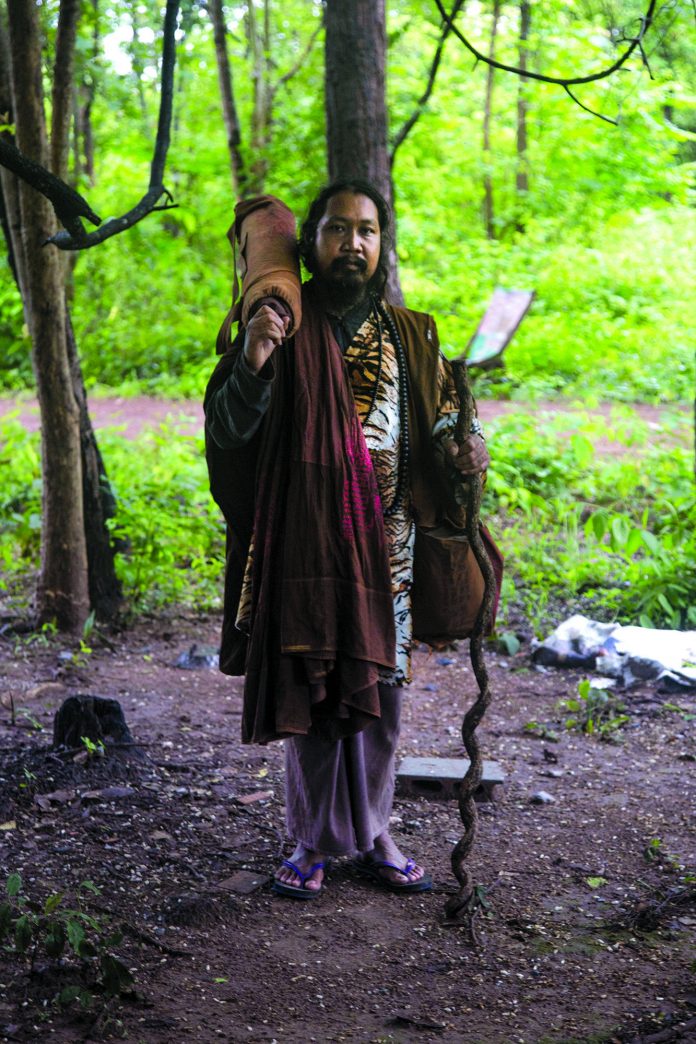
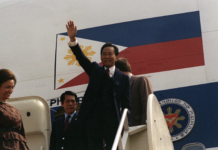
![The Road to Independence: Malaya’s Battle Against Communism [1948-1960]](https://asiangeo.com/wp-content/uploads/2021/07/WhatsApp-Image-2021-07-26-at-11.07.56-AM-218x150.jpeg)
